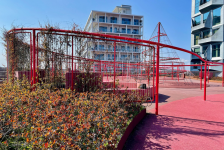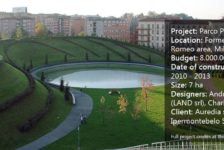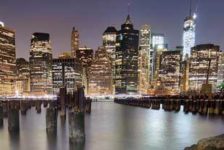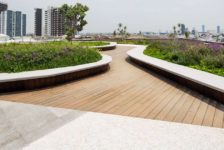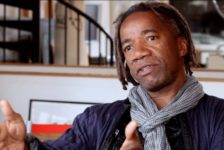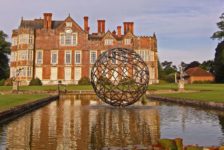Designers Must Develop These Five Areas of Expertise to Stay Relevant and Make Lasting Change
By Carmine Russo Jr | Associate/Urban Designer/Landscape Architect, NBBJ
In my career, I have watched many design professionals play a passive role in city making, providing incremental change without influencing the greater context. This needs to change. Particularly in the so-called “Rust Belt” areas that are just beginning to recover from years of stagnation, cities need designers — and other professionals — who are willing to play a more active role, who engage with civic leaders and consistently instigate improvements to the public realm. Here are five skills that designers today must develop in order to make a positive, lasting impact on cities:
Generating Public Awareness
The Purpose City is a new initiative bringing together leaders in government, business, design and academia to explore how we shape our cities. Initiatives like these are helping civic leaders realize that sound planning and urban design can have a profound effect on where new residents and businesses choose to locate. They also help savvy developers understand the value of connecting their projects to vibrant public amenities and engaging with the larger community that will be necessary to foster active neighborhoods and districts.
In Cleveland, for instance, Stark Enterprises’ nuCLEus mixed-use project fostered engagement between city officials, the developer and the design team to explore possibilities for updating downtown streetscape standards. This dialogue examined how best to make use of the public space surrounding the nuCLEus site, reaching beyond its boundaries into the urban context to benefit new residents and the city as a whole.
Developing Environmental Understanding
Advances in storm surge and coastal inundation modeling are allowing researchers and designers to play a greater role in developing urban infrastructure as a means for mitigating climate change impacts. Through digital data gathering and research, urban designers can continue to improve our understanding of the financial incentives of good environmental design and green infrastructure.
This is visible in New York City’s Rebuild by Design competition in the aftermath of Hurricane Sandy. Two years into this effort, the region’s coastal resiliency projects are currently being assessed by state and local officials for their ability to enhance low-lying and waterfront areas with graywater remediation, waterside parks, berms with bicycle paths, even oyster beds. Armed with this ongoing data and monitoring information, the public can demand a more coherent approach to infrastructure from government officials.
Taking Initiative
In many cities, especially throughout the Midwest, vacant properties — such as the old Columbus Dispatch newspaper headquarters — are filled with opportunity, needing only someone to call attention to that potential. Designers can take the initiative by providing a vision, as a no-risk brainstorming exercise for these vacant sites, using their talent for ideation to imagine new possibilities that may or may not lead to fruition as a project. At the very least, these sorts of exercises pose an opportunity to unlock civic memory and inspire a strategy for the future.
Cultivating Connections
Civic leaders are increasingly cultivating community-based partnerships with non-profits, local organizations and private entities to develop new forms of collaboration that empower downtowns to reshape their neighborhoods. Designers and design initiatives can help to convene these partnerships.
In Columbus, the transformation of the downtown riverfront was achieved through the Scioto Greenways Project, the result of a comprehensive, designer-led public process that resulted in the 2010 Downtown Strategic Plan, which led the city to engage with the Columbus Downtown Development Corporation (CDDC). Following a feasibility study, the city and CDDC were able to secure $35.5 million in funding from a collection of public and private partners, which allowed them to remove the Main Street Dam, restore the Scioto River channel and create 33 acres of new urban greenspace in the heart of downtown. These improvements to the river’s natural ecosystem made this zone more accessible for recreation and provided a new urban destination for downtown residents, office workers and visitors.
Advocating for Equality
Cities have the ability to transcend the status quo by thinking of the bigger picture, providing ideas, and inspiring others to build more healthy and livable environments, which can lead to a more equitable distribution of resources. In Cleveland, an assembled team known as The Group Plan Commission, representing a broad swath of local business leaders and community activists, aimed at providing a facelift for an aging civic green, Public Square, in the heart of a downtown that is finally on the road to recovery after years of neglect. This group proposed a vision for an aging piece of infrastructure that, once a symbol of civic pride, had been carved up by years of automobile-centered planning. When completed, the redeveloped square will be an amenity for all residents of the city, not just automobile owners.
… But Placemaking Is Still Important Too
Increasingly Millennials, empty nesters and other former suburbanites wish to relocate to urban centers, providing cities an unprecedented opportunity to re-envision what makes them great: the people, the cultures, the architecture and all the spaces in between that connect and provide identity to the city as a place. This requires the collaboration of city officials, the design community and the public at large to cultivate lasting solutions and partnerships that can serve as the hallmarks of a new, brighter future. As Central Park in New York serves as a lasting example of public investment in urban infrastructure, we too now have the opportunity, particularly in the Midwest Rust Belt region, to re-imagine our shared public spaces for future generations.
Published in Blog


